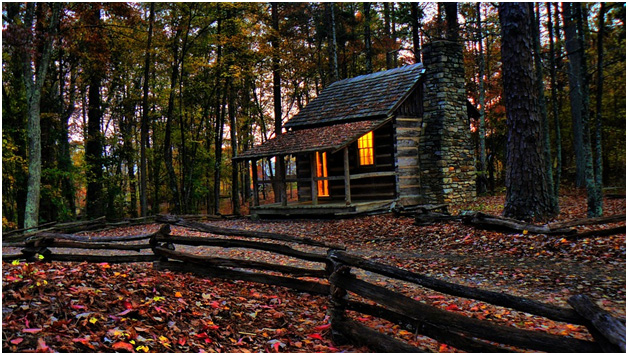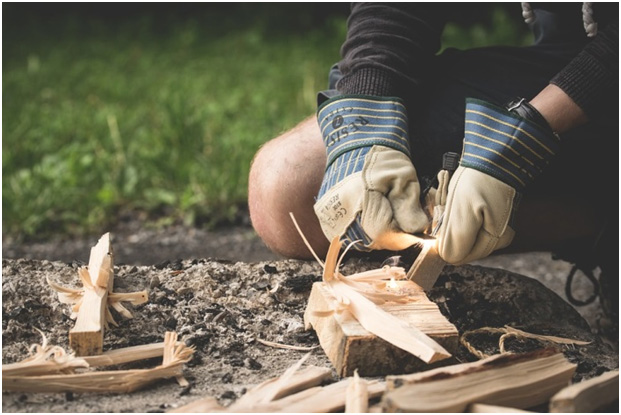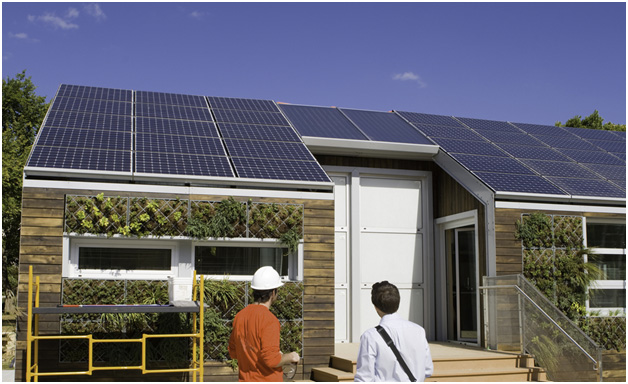We live such hectic lives, filled with absolute non-sense that we forget what it is we’re actually living for. Most of us have 60 hours’ work weeks so we can pay rent, taxes and buy food. We don’t even have time for our loved ones, and we seem too busy or too tired even when we take a day off. That’s when leaving it all behind and starting a new life in the middle of nowhere starts to sound like an awesome idea.
Give it all up
The first thing is renouncing your old life and habits. That sounds pretty terrifying, but it’s liberating at the same time. Ask yourself this: if a tornado were to take you to Oz, what would you miss the most about your life now?
Giving up your life starts by prioritizing the essential things and relationships. After that, you’ll find there are plenty of things you would gladly let go of, if, in exchange, you could have peace, tranquility, and love.
Find a place

After deciding you really need to take off, you can’t simply do it without a plan. That’s why you should find somewhere to stay first. Maybe you have a cabin in the woods or a property in an isolated territory, and that could be your starting point.
But if you have to find your own place, things can get complicated. For instance, you can either buy or rent a piece of land. You should make sure the place is isolated enough so you won’t have any nosy Nellies around, but still, have some neighbors at convenient distances. You should also check that a nearby town doesn’t have future plans to extend closer to your property if you want to live a more solitary life.
After that, you can set up a camp, maybe even move in your trailer and start building your own home. If you have some money saved, you can commission the work to a professional, but you also have the option of turning this into your first DIY project.
Learn survival skills
You can’t move off in the wilderness without learning some survival skills first. The first one would be how to find water if there are limited water sources near your property. If you have very hot summer days when springs peter out, you might need to use other techniques like placing plastic bags on tree branches or digging for water.

You should also learn how to build a fire, but that’s the easy part. After all, you can leave home equipped with 20 pounds of waterproof matches. The hardest part is to learn which trees you can cut down, how to chop them and how to store the wood properly. If you cut green trees and the wood gets too wet, you’ll have fewer chances of building a lasting fire.
Grow your own food
This can mean different things depending on where your property is. If you’ve moved off to a deep, damp forest in the mountains, your only options might be hunting, fishing and eating wild fruits. Of course, learning some hunting and fishing skills, along with buying proper equipment is useful no matter where you might end up. And you need to recognize which plants are edible, and which aren’t.
If you’re moving to a friendlier environment, you can always build a greenhouse with basic equipment. So you might need nothing more than some sturdy cellophane and a few pallets, along with plenty of water and the right seeds.
Apart from that, you can farm certain animals, depending on how large your property is. Chicken is the easiest when you take into account all the logistics, like space and food, plus they give you nutritious meat and eggs. Otherwise, you can consider raising cows for their milk, maybe buy a couple of horses if you own a bigger farmstead.
Arrange your amenities
You also need some degree of comfort, especially for keeping a clean environment. So you’ll want a toilet and some sort of washing facilities, and you have plenty of options here too. The easiest would be to buy a camp toilet and a camp shower, which can easily be transported and used no matter where you are.
Or, you can build your own bath, and improvise if you don’t have any running water. For instance, your toilet can be an outhouse, but you have to place it at some distance from your house and greenhouse.
Your shower can be a barrel of warm water with a valve attached to it and a hose with a showerhead for the warmer summer days. Or you can get a bathtub for indoor use, and that would help you relax after a long day’s work.
Earn the money you need
You might still need some money even if you’re living in a remote location for paying the rent or for buying the things you can’t produce on your own, but that doesn’t mean you should get a day job in the city.
One idea is to sell or trade the things you produce in surplus. So if you have lots of eggs or meat, you can sell that to your neighbors, or trade with them for clothes or different tools.
Another idea is to focus on a skill you already have, and sell the results of your work on the Internet. For instance, you might be into crafting and learn how to make interesting sculptures. Or decorate axes. Or make origami. The world is your oyster.
Learn to enjoy solitude

This might prove to be difficult enough, especially if you’re all alone. We’re so accustomed to noise (even white noise) that eating a meal by ourselves without constantly checking our social media accounts seems impossible. But if you’ve chosen to live off the grid, you can find pleasure in loneliness.
So after all that, what seems like the most difficult to do? What plan do you have? Tell us all about that in the comments.
About the author: Mike is a passionate hunter and his favorite grounds are Alaska and British Columbia. He’s also an expert in hunting gear and he is one of the most reliable resources when it comes to choosing the right tools for the job. He also writes for OpitcGearLab.com






